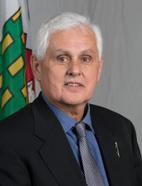Thank you, Mr. Speaker. This past week I witnessed and participated in a decision-making process where there appeared to be a misunderstanding with respect to a matter that would provide housing to approximately 42 people in Yellowknife; a misunderstanding that blew up in the press, and one that could have easily been avoided if this government gave serious thought to the benefit of the project, a project with many moving parts.
I give credit to the Yellowknife Women's Society, who identified a serious need in the community and have identified a potential solution to address and action this need. The solution, however, does require buy-in from Canada, this government, and all stakeholders, and this is where it gets cumbersome.
Mr. Speaker, it is important to note that there are multiple parties involved in the Arnica project. There is the owner of the building, the Yellowknife Women's Society, various GNWT departments, the Government of Canada, the City of Yellowknife, concerned residents, and the future tenants.
Mr. Speaker, the federal government would ultimately provide funding of approximately $4 million, which each territory could use. The NWT Housing Corporation would contribute approximately $650,000 to confirm its support of the project, to help it move forward. The federal government will want to know if the project is feasible. The GNWT will want to know if they are making a one-time contribution or if they will have to make further contributions or ultimately have to take the building over at some point.
However, it does not end there. There is the matter of the land and building. Is it suitable? What condition is it in? Is there contamination, and are there zoning issues? In addition to that, there are consulting fees, legal fees, purchase costs, ongoing maintenance costs, management costs, and tight deadlines. All this has to be addressed in what is now a condensed timeline.
Mr. Speaker, one area that will ultimately bog down the process is the red tape that both the federal and territorial governments have in place. It is in this area that non-profits require assistance, as they often lack the resources and time to navigate through it. It is assistance in this area that this government has to be proactive on and hands-on. In this day and age, we find it easy to send emails back and forth and try to address issues. Nothing, however, replaces initial face-to-face meeting with all parties present to clarify issues and come to a consensus on how to proceed and define responsibilities to meet deadlines and deliver projects. Mr. Speaker, I seek unanimous consent to conclude my statement. Thank you.
---Unanimous consent granted
